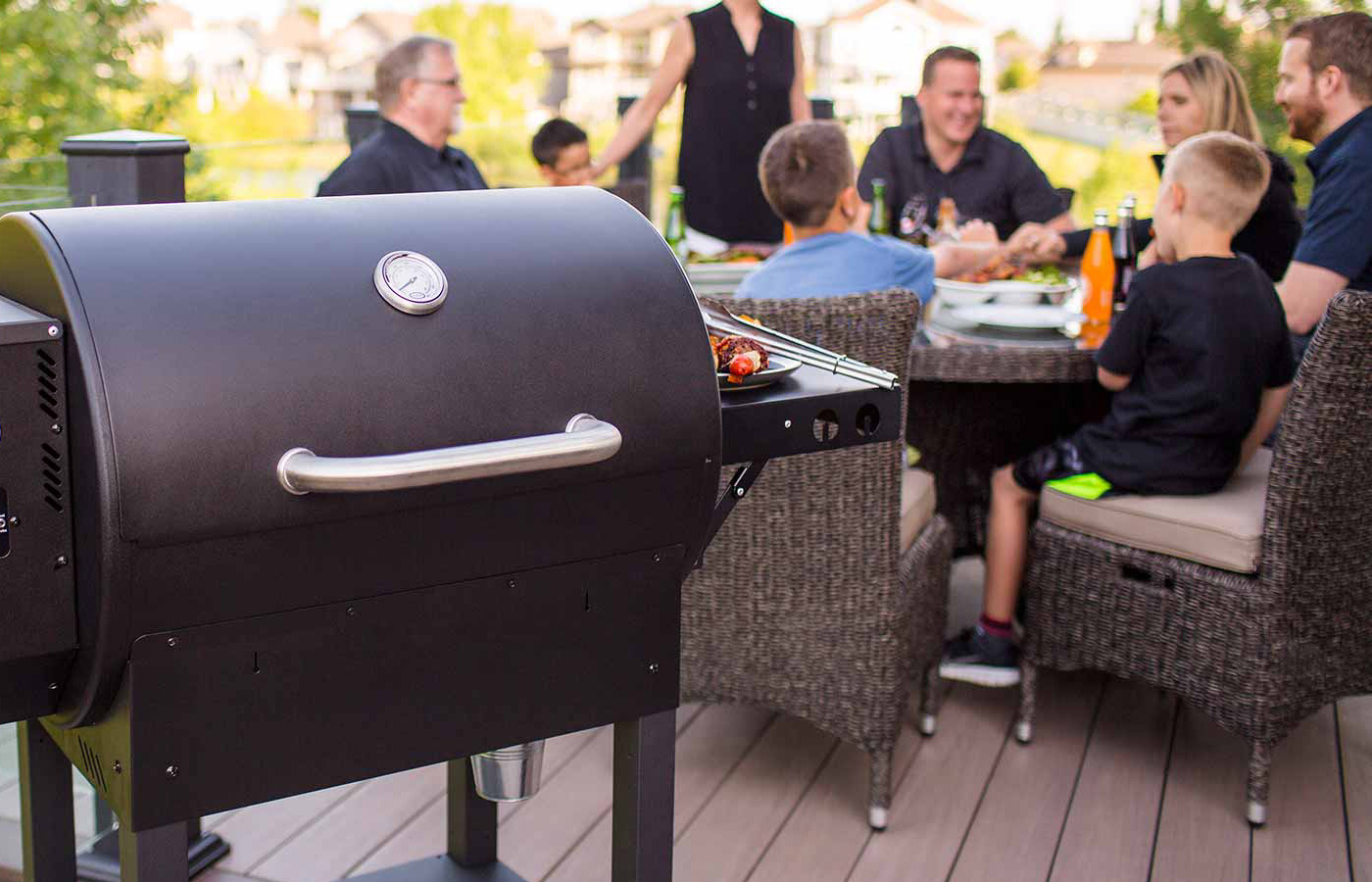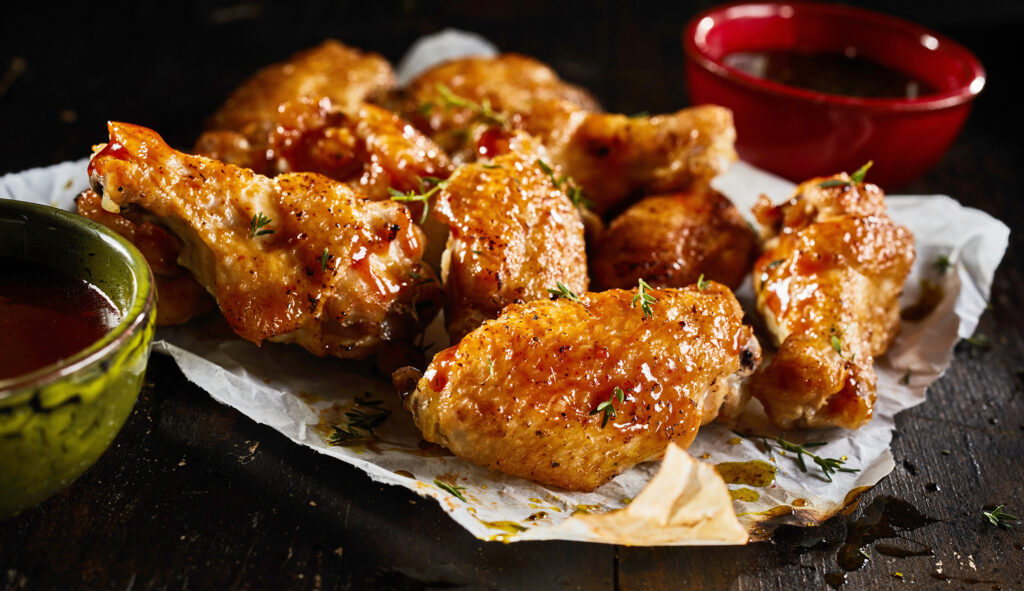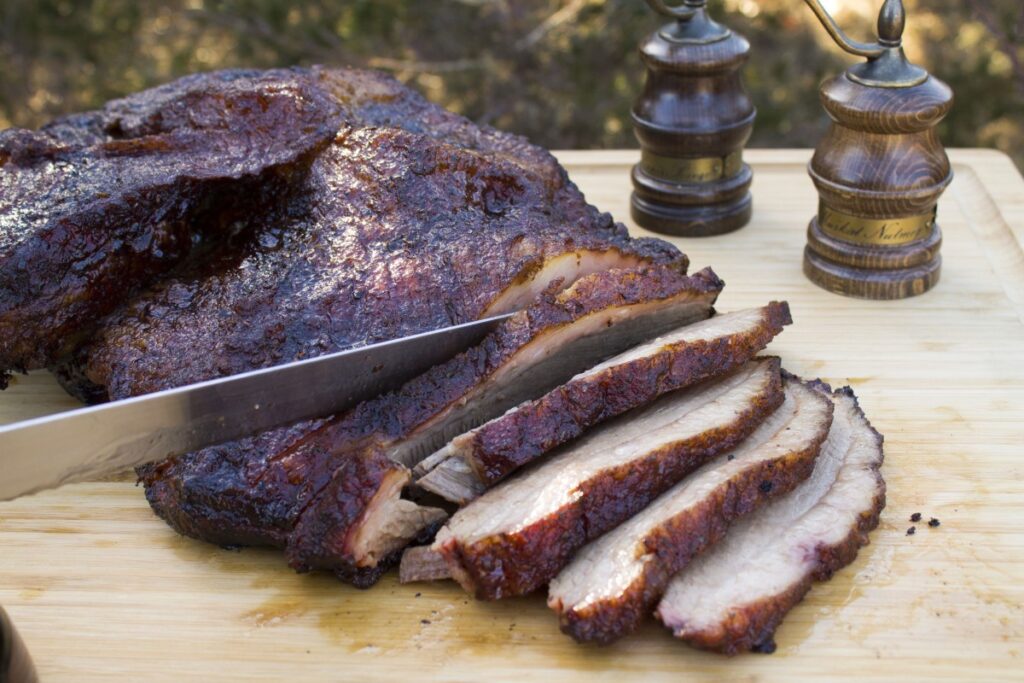When you think of Italian or French cuisine, barbecue is not the first thought that comes to mind. But, beyond the pasta and heavy butter-based sauces, both countries have a rich tradition of barbecue.
Each country has a distinct go-to menu item that most tables in those countries will have. They are their traditional, and most popular, BBQ foods. In Italy, it is the Florentine steak; while, in France, it is the merguez. Each is unique to their countries.
Fiorentina Steak
This dish requires a specific cut of a specific animal, the Chianina – an Italian breed of large white cattle and one of the oldest breeds of cattle in the world, according to Wikipedia. The “bistecca alla fiorentina“, as it is called in country, uses the cut that includes the filet and the sirloin from “the loin of veal, basically the back of the animal, usually between 8 and 18 months old,” Natural Italiano notes.
This T-bone steak (and if you don’t have access to Chianina any quality T-bone will suffice) should be left outside the refrigerator for three hours prior to cooking.
Most recipes call for a thick cut of the meat – 3 inches thick seems to be the most popular – a hefty steak that is meant to serve 3-4 people
There are only 5 ingredients needed to cook this.
- 1 T-bone or porterhouse steak, at least 3 inches thick & 3-3½ pounds
- 1 bunch fresh rosemary
- 1 bunch fresh sage
- 2 tablespoons extra virgin olive oil
- Kosher salt & freshly ground black pepper, to taste
When selecting the steak, look for one with good marbling – those tasty little white flecks that are throughout the meat.
Instructions
- Remove the steak from the refrigerator at least a few hours before grilling to let it come to room temperature.
- Preheat your grill to medium-high to high heat.
- Brush the steak on all sides with olive oil and season one side with salt and pepper.
- Grill the steak, seasoned side down for 5 minutes. Season the second side and flip the steak. Grill on the second side for 5 minutes. Flip the steak again to grill for another 4-5 minutes on the first side. Then, flip the steak a final time.
- Using a meat thermometer or instant-read thermometer, insert it into the side of the steak so that it is about in the center of the strip. Use the temperature to determine how long you need to continue cooking your steak. (120F for rare, 130F for medium rare, 140F for medium – These temperatures take into account that the steak will continue to cook as it rests before serving.)
- When the meat is done to your temp preference, remove it from the grill and let it rest for 5 minutes for the juices to settle.
- After resting, carve the filet and strip steaks off of the bone. Slice each steak against the grain.
- Serve with extra coarse salt and pepper, as desired.
Bistecca alla Fiorentina is a favorite of Tuscan cuisine and a mainstay of Italian barbecue. The real bistecca alla Fiorentina can only be named so if the T-bone comes from the Italian Chianina cattle breed, but any quality T-bone, as mentioned above, can be used and will come close to the Tuscan cut.
Merguez
If you attend a barbecue in France, chances are you will see a strikingly red sausage being cooked on the grill. The merguez is the French version of chorizo, but made with lamb or beef, as opposed to the pork and paprika choice for chorizo. This paprika, spices and garlic sausage can be either very greasy or end up very dry. This is because pork can cook quickly and dry out – so to counter many French butchers overcompensate by adding a lot of fat to the mix.
The merguez is a thin sausage that uses lamb intestine casings. It is a staple of French barbecues, as hot dogs are in the United States. Lamb or mutton are often the choice because this sausage originated in North Africa where the population is predominantly Islamic and forsake pork.
The different areas this sausage is made determines some slight ingredient changes, but one common denominator flavoring agent is harissa. Started in North Africa, Maghreb region, which includes Algeria, Morocco and Tunisia, the merquez, now is a staple in Italy, and has become more available globally.
Ingredients (from Serious Eats)
- 2 teaspoons (6g) whole cumin seed
- 2 teaspoons (6g) whole coriander seed
- 2 teaspoons (6g) whole fennel seed
- 2 tablespoons (14g) paprika
- 2 tablespoons (18g) Diamond Crystal kosher salt, plus more to taste; for table salt use half as much by volume or the same weight
- 1 teaspoon (3g) cayenne pepper
- 3 pounds (1.4kg) lamb shoulder, cut into 3/4-inch cubes and gristle removed
- 1 pound (455g) lamb, beef, or pork fat, cut into 3/4-inch cubes
- 2 tablespoons freshly minced garlic (about 6 medium cloves; 25g)
- 1/3 cup (75g) harissa
- 1/3 cup (80ml) ice water
- Lamb casings, soaked in warm water for 30 minutes prior to use
Cooking Instructions
- Place cumin, coriander, and fennel seeds in a cast iron skillet over medium heat and toast until fragrant, about 2 minutes. Transfer to a spice grinder and grind into a fine powder. Transfer spice mixture to a small bowl and mix in paprika, salt, and cayenne.
- Place lamb and fat in a large bowl. Add in spice mixture, garlic, and harissa. Toss to thoroughly coat meat and fat in spices. Refrigerate until chilled, about 20 minutes.
- Grind mixture through a meat grinder, fitted with a small die, into a medium bowl set into a large bowl filled with ice.
- In the bowl of a stand mixer fitted with a paddle attachment, mix ground meat on low speed for 1 minute. Add in water and mix until liquid is incorporated and sausage is uniform and sticky, about 1 minute more.
- Form a small sausage patty; place the rest of the sausage mixture in the refrigerator. Cook patty in a small frying pan over medium-high heat until cooked through. Taste and adjust seasonings if necessary.
- Stuff sausage into lamb casings and twist into 6-inch links. Refrigerate until ready to cook.
- Grill over medium-high direct heat until sausage registers 155°F when an instant read thermometer is inserted in the middle of the link. Remove from the grill, let rest for 5 minutes, and serve.
“There are numerous variations on merguez-style seasoning, but it typically features paprika, toasted ground fennel, coriander and cumin seeds, cayenne, black pepper, cinnamon, salt and sugar,” Spruce Eats notes. “Merguez is also popular in parts of the UK and France with large Algerian and Moroccan populations, where it’s a favorite street food, often eaten in sandwiches and with French fries.”





